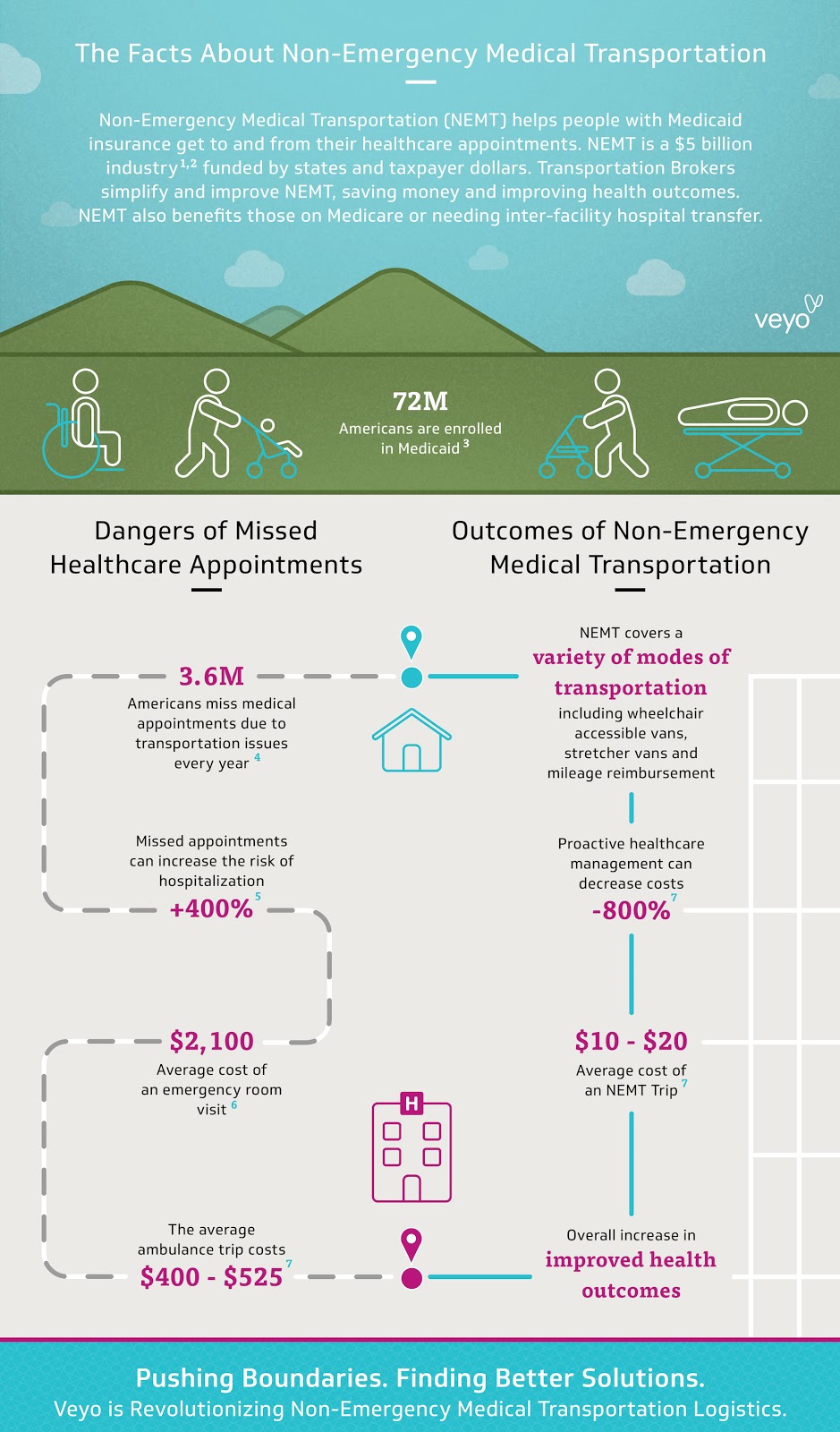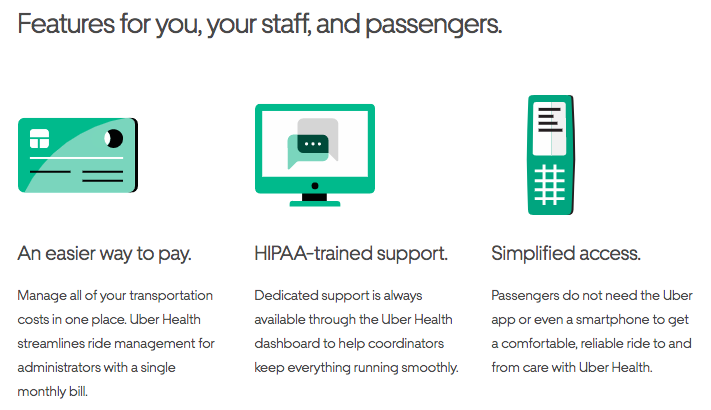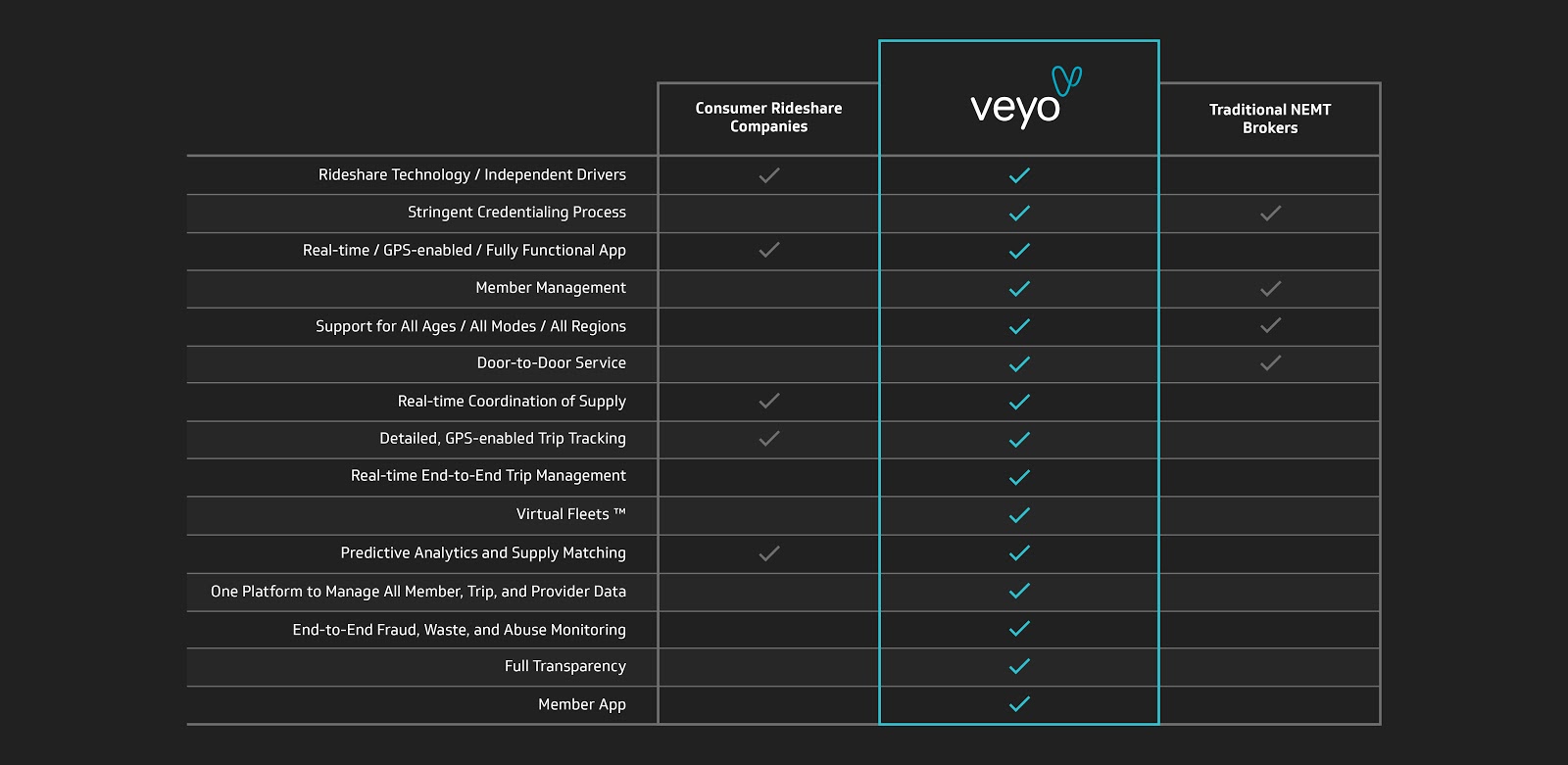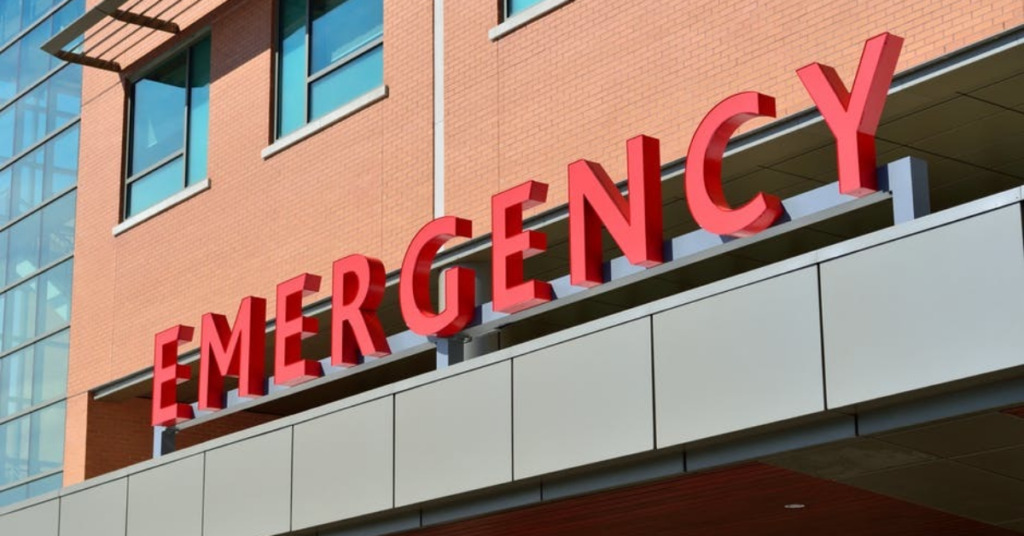Have you ever shown up to pick up your passenger, only to discover they needed to go to the emergency room? For many drivers, this is one of the worst pickups to have. But for some drivers, it’s a very lucrative driving option. Here, senior RSG contributor Paula Gibbins shares more about non-emergency medical transportation (NEMT) and how it works for drivers.
There’s a new market for rideshare drivers: health and medical transit. These companies provide rides to and from hospitals, clinics and other medical facilities to patients to make sure patients arrive safely and reliably to their appointments.
These companies do business as Non-Emergency Medical Transportation or NEMT. Let’s look at what NEMTs are, which companies are providing such transportation and how Uber is trying to do the same.
Interested in NEMT? Sign up to get started with Veyo here.
What Is Non-Emergency Medical Transportation (NEMT)?
According to Veyo, one of the companies providing this sort of transportation:
“Medicaid NEMT or Non-Emergency Medical Transportation is a phrase typically used to describe a transportation benefit for Medicaid or Medicare members that ensures eligible patients can get to and from their medical appointments, the pharmacy, urgent care, or the hospital. Trips are non-emergency in nature, meaning there is no immediate threat to the health or life of the participant, and no elements of life support are required in the vehicle during the trip.”
Overall, it sounds similar to a regular ride given by any existing rideshare company, the difference being that it’s specifically geared toward those with Medicare or Medicaid and need help getting transported to and from their regular non-emergency appointments.

What Veyo specifically does is offer driver services as well as the technology needed to give hospitals and clinics a way to provide this service to their patients.
Their website describes: “Veyo is a complete transportation broker, offering a next-generation solution to the logistical challenges of NEMT. We’ve revolutionized NEMT with a technology-first approach that brings the breakthroughs of consumer transportation to the medical industry. Real-time dashboards, supply and demand analytics, and member and provider apps remove the need for traditional dispatch methods and manual trip reporting.
Instead of the traditional fixed fleets that have a difficult time scaling when demand is high (and leave providers with a surplus of vehicles on the road when demand is low) Veyo’s Virtual Fleets are flexible, allowing capacity to be rapidly scaled up and down in minutes to meet demand changes. Our dynamic supply system constantly manages and optimizes the right supply levels for different modes across geographies (both urban and rural), ensuring that every member gets picked up on time.”
How is NEMT Different From an Uber Driver Who Picks Up a Patient From the Hospital?
The biggest difference I’ve found is that this is billed through Medicare or Medicaid instead of an individual’s account. So, if it’s just a regular Uber request, the person requesting it is the one to pay for it. With Veyo, the hospital or clinic has an account set up to use for these services and they book the rides for their passengers as needed.
How is Uber Health Different?
The Uber Health part of their website states: “When a ride is booked in advance, the passenger receives a call or text with the scheduling information. When a car is on the way to the pickup location, the passenger receives another call or text notifying them. If the passenger doesn’t have a phone, no problem. The caregiver or organization can coordinate on their behalf.”

Due to the Health Insurance Portability and Accountability Act’s (HIPAA) privacy regulations, drivers are not aware they are picking up someone through Uber Health. It is just a service they advertise to the healthcare industry. It’s not something a driver can opt-in or opt-out of. Unfortunately, this means an Uber driver cannot exclusively drive for Uber Health if that is something that’s appealing to them.
With that being said, Uber drivers do not need any special training or anything related to health services in order to pick up an Uber Health rider.
What Other Options Are There for Patients to Get to Appointments on Time?
In large cities, there is public transportation and in some cases, like in Minneapolis/St. Paul, there’s something called Metro Mobility. Metro Mobility is a shared public transportation service for certified riders who are unable to use regular fixed-route buses due to a disability or health condition.
The biggest difference here is that the patient has to pay for it themselves with Metro Mobility or other public transit options. And for some, that is the reason they can’t make it to their appointments. If they can’t afford the means to get there, they simply won’t go.
Veyo has on their website what makes them stand out versus these other options:

Do NEMTs Pay Drivers More?
For Veyo, much like Uber, “you can work as little or as much as you want, which means the amount you make is up to you. Pay varies by region, and we don’t take any commissions or fees out of our rates.”
Veyo boasts that drivers keep all of what they earn. Their drivers are paid by the mile (there is a minimum fare) and in some locations there’s a pickup fee. They are currently only available in Arizona, California and Connecticut. Here’s the breakdown of pay for Veyo drivers by region:
Arizona
- Pickup fee: $1.00
- Rate per mile: $1.00 per mile
- Minimum rate: $5.20
California
- Pickup fee: $1.00
- Rate per mile: $1.15 per mile
- Minimum rate: $4.80
Connecticut
- Pickup fee: N/A
- Rate per mile: $1.25 per mile
- Minimum rate: $6.50
Live in one of these states and want to sign up with Veyo? Sign up to drive with Veyo here.
Do Drivers Have to Be Certified or Do Anything Special With Their Car to Get These Rides?
For Uber Health, the answer to that is no. Drivers do not need special training or anything specific. For Veyo, the answer is slightly different.
Veyo’s website says, “To become an independent driver-provider, you’ll need to complete our registration process which includes: passing a background check (which may include fingerprinting), passing a drug test, completing a CPR training course, and completing ADA/HIPAA/customer sensitivity training. Our Driver-Providers must have a four-door vehicle, year 2001 or newer*, which has passed a Veyo vehicle inspection.”
I think it’s a good idea to have CPR training and HIPAA training so the drivers fully understand what they legally can and cannot say about their riders. They do not require any special equipment, which is nice. And they do have a vehicle inspection the vehicle must pass, similar to Uber. Here are the vehicle requirements for Veyo:
- Model year 2001 or newer (2006 in Connecticut)
- Vehicle must have 4 doors
- Seating and seat belts for 4 passengers, not including the driver
- 30″ max seat height and 20″ min seat height
- Room for a wheelchair in the back/trunk
Do Drivers for Veyo Only Pick Up Patients and No One Else?
Veyo’s website states: “You’ll be driving people to and from their doctor or health appointments. These are not emergency or medical trips, so you don’t need to be an EMT or paramedic. The types of trips often include:
- Mental and behavioral health appointments
- Dialysis for someone who has advanced kidney disease – they usually have dialysis appointments three times a week
- Substance abuse counseling and treatment services
- A trip to their doctor for primary care or a specialist visit
- Physical therapy or other forms of rehabilitation
Because their health appointments are scheduled beforehand, we know when and where pickups will need to occur, and we’ll help guide you to the right locations to ensure your success!”
For Veyo specifically, you would only be driving patients who are heading to or going home from appointments. You would not be getting rides across town or heading out for the evening. NEMT rides are not your standard Uber rides.
Other NEMT Companies
Briefly, there are a handful of similar companies. Here’s a glance at those.
Trip2
“Trip2 is a non-emergency medical transportation solution dedicated to optimizing patient care and service. Getting patients to their appointments quickly and safely is our highest priority.”
To complete your driver profile for Trip2, you must provide a picture of your driver’s license, a picture of your car insurance card, pictures of your vehicle (front, sides and rear) and a selfie. For their full driver and vehicle requirements, visit their driver requirements page here.
Circulation
The healthcare administrator books a ride for the patient using Circulation’s simplified ride ordering platform. Rides can be booked on-demand or scheduled days, weeks or months in advance of a patient’s appointment.
Circulation’s transportation exchange matches the patient with a vehicle based on their needs (i.e. specialized vehicles), as well as current availability. Once the ride is ordered, Circulation sends reminders via text or voice letting the patient know the status of their ride.
One-way or round-trip rides can be scheduled days, weeks or months in advance — with the functionality to book recurring rides. Patients receive notifications — either by text or voice message — with all the relevant details they need to complete their rides.
Why Are NEMTs So Crucial?
In a Health Tech Magazine article, it’s stated that, “One study in the Journal of Immigrant and Minority Health found that lack of a ride caused 25 percent of suburbanites in the survey to miss at least one medical appointment. Some patients wait until they have an emergency, or simply call 911 when they need primary care.”
This shows that having these Non-Emergency Medical Transportation options increases the chances of patients arriving for their appointments instead of canceling.
“A year ago, there were two options for non-emergency transportation: taxi vouchers or brokers,” says Circulation co-founder and CEO Robin Heffernan. Brokers can take several hours to have rides lined up, while taxis can be unreliable. Rideshare services deliver in a matter of minutes and riders can see right on their phones exactly when drivers will arrive. “We are trying to reduce no-show rates. We help with the discharge process.”
Overall, it seems like NEMTs are here to stay, although you may not see advertisements from Uber asking you if you want these rides. On the other hand, you can sign up for dedicated NEMT providers, like Veyo, if you’re interested in this specialized line of rideshare driving.
Have you or would you drive for a non-emergency medical transportation company? Why or why not?
-Paula @ RSG





